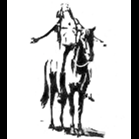main ways to buy or sell online
-
Recently Browsing 0 members
- No registered users viewing this page.
-
Topics
-
-
Popular Contributors
-
-
Latest posts...
-
223
Bank account frozen
I doubt that agents will be able to help since this whole crackdown started because of them and dodgy branch managers. -
47
MAGAflakes Apoplectic Over Gov Gavin Newsom Trolling Trump
You should be loving in then. But you dont. Like Donnie no sense of humor. -
96
Air Fryer
I love carbs, and it's hard to stay as lean as I usually am eating them, including grains, potatoes, carrots, rice, bananas, whole grain bread, squash , along with green and yellow veggies, fruits and lean meats and fish. Broccoli, cauliflower and cabbage are favorites. The only thing keeping me from being as lean as I've been all the years is getting older and working out less, at least the last year. -
55
I was sexually assaulted on a plane
In UK, a woman can be convicted of other sexual offences against a man, eg without consent or penetration with an object other than a penis, and so can face similar legal consequences. -
60
DWP New site from Issan Group new banking requirements
I wouldn't know, but seeing as 16 weeks has been allowed to cover post both ways, I wouldn't have thought it mattered, as long as it's all air mail. In my area, it is actually receiving post, no Christmas or birthday cards, for instance..😪 -
47
Thai - Cambodia Conflict Hun Sen Threatens Arrest of Thai Leaders Amid Border Dispute
Irrelevant...but I guess you can't think of anything intelligent to say...well, goodbye, have a nice day.
-
-
Popular in The Pub



.thumb.jpg.3ee24d9400fb02605ea21bc13b1bf901.jpg)








Recommended Posts
Create an account or sign in to comment
You need to be a member in order to leave a comment
Create an account
Sign up for a new account in our community. It's easy!
Register a new accountSign in
Already have an account? Sign in here.
Sign In Now